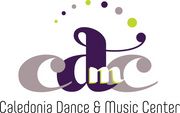The History of Pointe Shoes in Ballet

One of the most significant parts of ballet is dancing “en pointe” to create a graceful, weightless look. This means balancing on the tips of the toes, and is possible after training for many years and wearing pointe shoes. These slippers have a reinforced box at the toe and a steel rib inside the sole to support the foot. Without these shoes, even a skilled ballerina would struggle to dance en pointe. Their development has had a powerful influence on the practice of ballet since its inception.
When Were the First En Pointe Performances?
Originally, ballet dancers wore heeled shoes to dance. However, this made it challenging to leap, which ushered the transition to soft slippers. While this allowed freedom of movement, it didn’t create the weightless appearance that performers sought. In 1795, an inventor named Charles Didelot created a “flying machine” that supported ballerinas on wires, allowing them to dance on the tips of their toes for the first time.
When Did En Pointe Lose the Wires?
 While Didelot’s machine enabled beautiful performances, the next few decades saw a greater emphasis on technique in ballet. Many performers didn’t want to rely on the equipment, as they did not have control over it.
While Didelot’s machine enabled beautiful performances, the next few decades saw a greater emphasis on technique in ballet. Many performers didn’t want to rely on the equipment, as they did not have control over it.
Many people recognize Marie Taglioni as the first dancer to achieve the feat of en pointe dancing without a flying machine, performing “La Sylphide” in 1832. While her slippers were slightly reinforced with heavy stitching, they did not have the structural support of modern pointe shoes. Dancers who followed her example throughout the 19th century began to use layered cloth to build a toe box for support.
How Did Modern Shoes Develop?
Anna Pavlova is one of the most celebrated ballet dancers in history, and she receives credit for the development of the modern pointe shoe. As a dancer with slender feet and high arches, she was prone to foot injuries. To protect herself when dancing en pointe, she reinforced the shoes with stiff, leather soles and a hardened toe box. This combination is the basis for the steel rib and box that are common in today’s pointe shoes.
If your child is interested in ballet lessons that include en pointe dance classes, contact Caledonia Dance & Music Center. Serving Kent County, MI, for almost 40 years, this family-oriented studio offers classes for children and adults at varying levels of skill, including beginners. They are a licensed affiliate of "More Than Just Great Dancing!®" and follow "Safer Studio™" guidelines. Call (616) 891-1606 to speak to a friendly team member about scheduling. Visit the website for more information about their available classes.
About the Business
Have a question? Ask the experts!
Send your question

